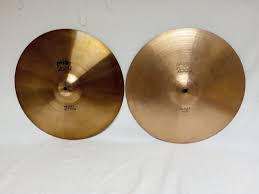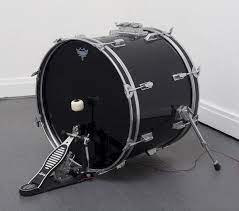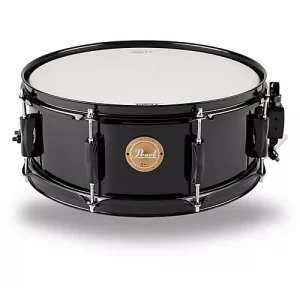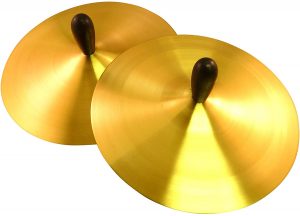Updated on April 3rd, 2022
Awestruck watching legendary drummers like Neil Peart and Buddy Rich performing? Well, for beginners like you, watching these drumming geniuses is surely inspirational. If you too aspire to follow their path, then you need to start with the basic knowledge of drumming. That means you must know about the different parts of a drum set first.
A drum set is not like any other regular musical instrument considering the complexities of creating beats on drums. While these days drums come in sets of 5 or 8, there are also electronic drum sets available. However, every modern drum set has the same parts, maybe with a few additions, as per drummers’ modifications in the set.
Besides, with in-depth knowledge and the right guidance, aspiring drummers like you can totally ace drumming. So, here’s a complete guide to the different parts of a drum set. We’ve tried our best to explain every detail for you to understand this instrument well.
1. The Bass Drum / Kick Drum
To a complete beginner, the drum set might be quite complicated to understand, as there are numerous parts and each is capable of producing a distinct sound. Well, in the whole set, the largest piece is the bass drum, also known as the kick drum. Generally, these are 22’’ in diameter with a depth of 16’’. However, this being the regular size, you can also check with a smaller size or maybe opt for a kid’s drum set.
Coming to its sounds, a bass drum produces the lowest pitch boom and in case, you change the diameter of the shell, you will notice a change in the notes’ pitch as well. Besides, you can also do this to check the size that is best suitable for your style of music. For instance, if you choose a wider bass drum, it would be ideal for doom metal because it will produce lower notes.
Apart from this, you must also know how to modify or alter the tone of drums. Firstly, a bass drum is played using a foot pedal, which is attached to the rim of the drum and when the pedal hits the resonant side/head of the drum, sounds are produced.
Well, this resonant head can be used to alter the tone and in some drums, there is a hole on the resonating side, which helps in altering the tone. Above all, it’s usually positioned on the floor, especially in front of the dominant leg of the drummer. It’s because using the foot pedal is easier with the dominant leg to produce the right notes. Needless to say, the bass drum plays a major role in creating musical beats when drumming.
2. The Snare Drum
Snare drums come next to bass drums in terms of producing varied tones and notes and are known to be the center of the setup. Positioned right between the drummer’s legs, this piece is a shallow drum. With a diameter of approximately 16’’ and depth of 6’’, the snare drum has a shell of either metal or wood.
Moreover, this drum piece has two skins- the batter side and the resonant head. While the batter side is the one, where the drummer hits with the stick, the resonant head is on the other, underneath the batter side.
If you’re wondering how a snare drum sounds, then you must take a look at the resonant head, which has snare wires suspending under it. This results in the classic snare ‘buzz tones’. You must also know that the snare strainer is a mechanism used to attach the wires to the drum. Besides, this snare strainer also has other functions, which include a throw-off to switch the snare on or off along with an adjustment thumb-screw to adjust and tighten the snare wires.
Lastly, placed on a three-armed bracket, the snare drum is typically placed according to the comfortability of the percussionist.

3. Hi-Hats
A part of a drum set that is capable of producing a wide range of tones and notes is known as the Hi-Hat. A pair of cymbals positioned close against each other and is operated using a foot pedal, these Hi-Hat cymbals are generally 14’’ in diameter. However, if you want it in a different size, you can definitely check with smaller sizes.
Well, of all the different parts of a drum set, Hi-Hats are the most dynamic component, which produces a range of distinct tones. The most common way to play Hi-Hats is to hold the cymbals closed with the foot when you’re hitting the top cymbals, while you can also produce a different note by playing the cymbals with the left foot. Further, you can create different notes like ‘swishing’, ‘ringing’, or a splashing sound. Not to mention, this part in the drum set is essential, as it brings a sonic variety to your creations.

4. Tom-Toms
Just like the bass and snare drum, there’s another part in the drum set that sounds deeper than the snare but the pitch is slightly higher than the bass drum. This is known as the Tom-Toms and often comes in a pair. Tom-Toms look similar to snare and bass drums but it’s slightly smaller than the latter two parts. Besides, Tom- toms come with both batter skin and resonating head but the resonating side isn’t used much and lacks wires.
If you’re opting for a 5 piece drum set, then you’ll get a high, mid, and floor or low toms. The high and mid toms are mounted on a frame placed above the bass drum. On the other hand, the low and floor toms require a different setup. You need to mount the low tom on a cymbal stand and the floor tom is required to be placed close to the floor supported by its three built-in legs. Overall, toms are used to add fills between tempo changes or in different sections in a song.
5. Ride Cymbals
If you have ever heard professional drumming, then you must have caught a distinctive ‘ping’ sound. Well, that’s the sound of the ride cymbals. The largest cymbal in the whole set, which is specifically placed on the right-hand side of the kit and is played using the tip of the drum stick. Also, it’s interesting to note that playing the ride cymbals with the tip of the drum stick is what produces its distinctive ping sound.
However, in case, you want a louder ping sound, then you just have to hit the bell of the ride cymbal using the tip or shoulder of the drumstick. Besides, there’s just one thing you need to be careful about when playing a ride cymbal, which is not to hit it with too much force, as you would do to the crash cymbal. Just try playing it as if you play the Hi-Hat but only without a foot pedal.
Well, to understand the sounds of ride cymbals and Hi-Hats, you can listen to any professional drum solo. You would notice that the drummer keeps changing between ride cymbals and Hi-Hat to enhance the songs because ride cymbals produce deeper sounds than the Hi-Hat. The tone ends up sounding like an interesting percussion section.
Check out more drumming videos to understand this distinction between ride and Hi-Hat cymbals better.
6. Crash Cymbals
The crash cymbals are slightly smaller than ride cymbals with a size of 16’’in diameter. Unlike the ride cymbal, wherein you can’t hit it hard, the crash cymbal is specifically designed to be struck with a lot of force.
Typically, made of elements like copper or tin alloy, the crash cymbals can effectively produce loudness and projection in the notes. Besides, the crash cymbal is placed right above the Tom-Toms on a separate metal stand. But professional drummers often have different sizes placed around the set to produce desirable yet varied types of sound.
Well, talking about the sounds produced by crash cymbals, we want to point out that these are majorly used as accent notes, which means these are louder and brighter compared to other cymbals. Also, notes produced by crash cymbals can sustain for quite a long time. So, when you’re playing, just make sure you hit the crash hard with the stem of the drumstick to produce the right tones, enhance fills or build up tension during the crescendo of the song.
Apart from all these, as you catch up with the techniques of playing crash, you can also add a couple of more in different sizes. This will give the power to enhance fills and develop a sonic palette to make your song sound much better.
Other additional parts
Well, the above-listed parts are the most essential ones in a drum kit. But there are more than these. From hardware to other additional parts, which ensure proper playability, a drum kit includes parts like drum throne, drumsticks, cymbal stands, splash cymbals, and so on. So, we have categorized these additional pieces of equipment into two sections- hardware and other add-on parts.
The hardware of a drum kit includes a drum throne, cymbal stand, Hi-Hat Stand, Boom stand, snare stand, bass drum pedal, and drumsticks. On the other hand, additional parts include splash cymbals, which is a smaller type of crash cymbal that will give you extra variations in the notes. You can also find a china cymbal, which serves as a great addition to the drum set. With up-turned edges and being mounted in an upside-down position, this cymbal produces a distinctive trashy-crash sound.
Exploring and understanding the different parts of a drum set will guide beginners like you on how to play drum kits. Besides, this will also help you to diversify your drumming skills with the help of additional parts often included in a professional drummer’s kit.
So, before you begin with your training, make sure you have complete knowledge about the different drum parts and the best approaches to play one.
Read also:
Best Drum Tuner for Fast, Easy Tuning At Practice Sessions 2021.
We hope you love our reviews! For your information, we do earn money from commission in the link in the content! For more information click here!



















